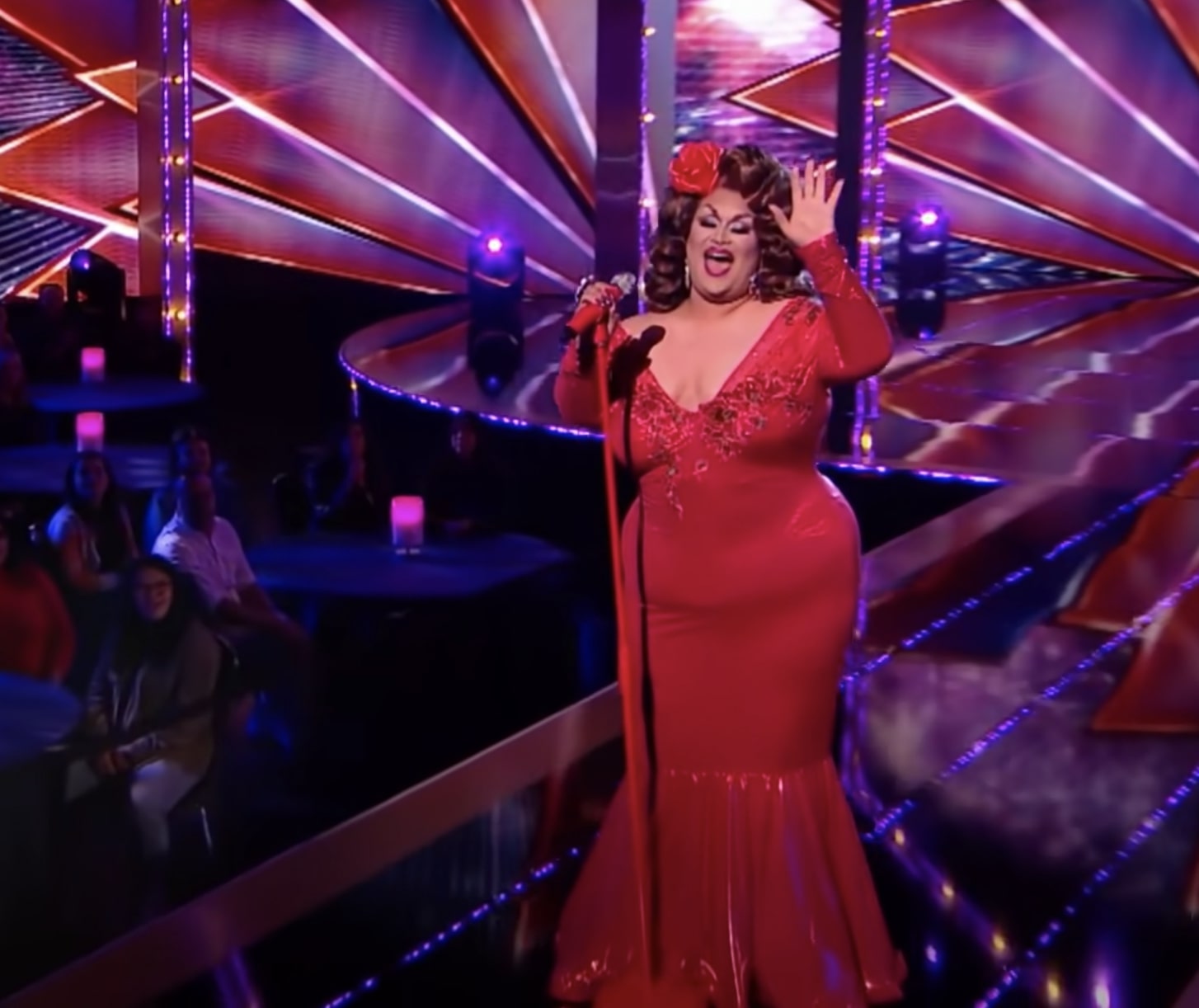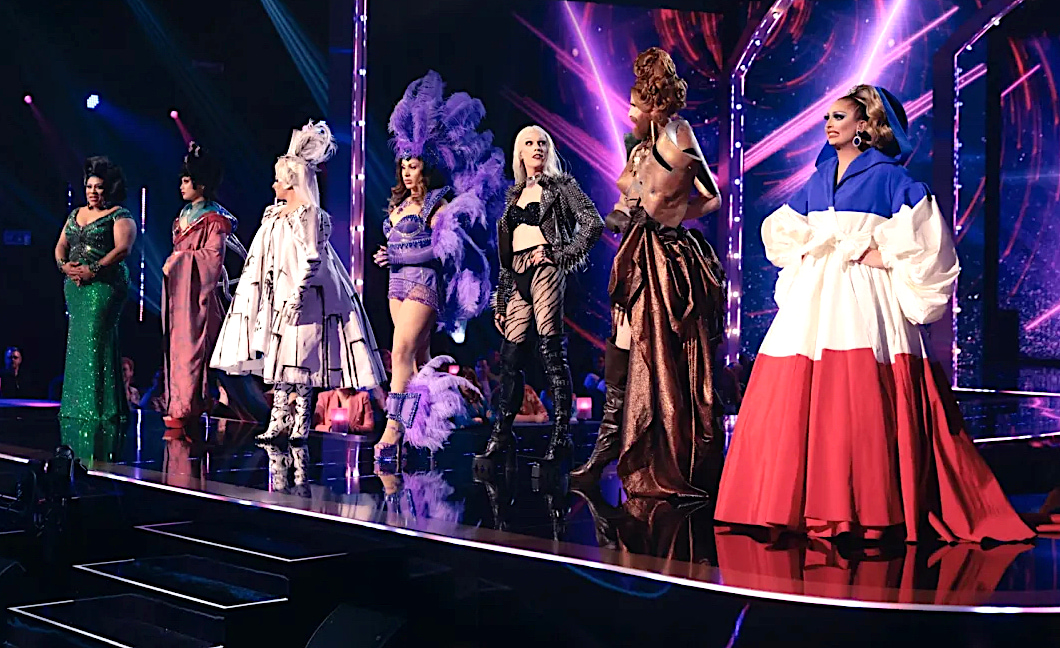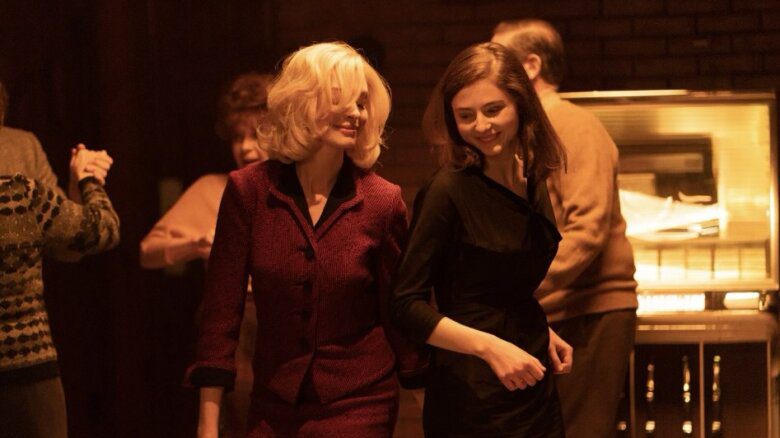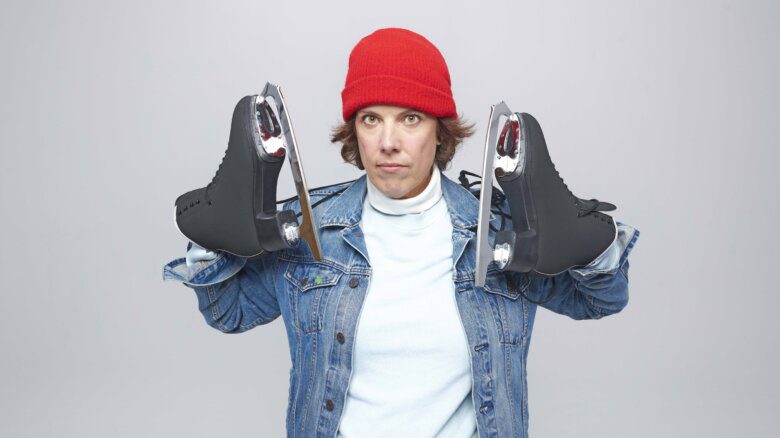Perhaps the most fundamental thing to remember about RuPaul’s Drag Race, especially when judging decisions confound or challenges get incredibly wacky, is that it started as a parody.
When it was still on Logo and filmed through a Vaseline-drenched lens, Drag Race was meant to mimic both Project Runway and, most notably, America’s Next Top Model. It was a real competition, sure, but both stylistically and in terms of format, it took many cues from both of those shows—that’s why we have the besuited, Tim Gunn-esque Ru in the workroom and the high-drama diva take on Tyra Banks on the main stage.
World of Wonder’s new drag reality competition series, Queen of the Universe, shares similar reality TV roots. The singing contest owes much to American Idol and its later variant, The X Factor. The structure is as traditional as singing shows go: each contestant comes out one at a time to sing a shortened cover, then receives feedback from the judges. Like X Factor, the queens are given the benefit of background dancers and stage production. But otherwise, this is effectively Drag Idol.
What separates it from Drag Race in terms of reality TV inspiration, however, is that Queen of the Universe is not a parody. Far from it, actually; this show is as straightforward as you can imagine. As a result, your enjoyment of it is likely predicated on how much you like singing competition shows two decades after American Idol’s debut—and how ready you are for more drag TV, particularly as produced by the company that already does Drag Race.
“This show is as straightforward as you can imagine.”
The premiere starts out with just seven queens, but as anyone who’s seen a promo for the show (or just the Paramount+ interface that spoils the twist) can tell you, that’s only half the cast. It’s an oddly toothless twist to surprise half the cast with more queens—until it isn’t, as the double premiere ends with six queens being sent home. One of seven being eliminated is much less dramatic than six of 14 immediately getting cut.
Queen of the Universe is full of odd little gimmicks like that. After the first six queens are sent home, one—La Voix, from the United Kingdom—is brought back by a panel that feels they’ve made a mistake. In the third episode, the in-studio audience decides on a bottom three, but then the judges decide to go home. Elimination decisions are stuck behind cliffhangers, meaning there’s no resolution to a round in the current episode. And in Episode 4, two queens are eliminated, while two other queens were suddenly made to compete in a sing-off. The haphazard eliminations make the unpredictable Season 3 of RuPaul’s Drag Race UK seem stable in comparison; it feels like, at any one time no one could go home, or everyone could.

Credit: Courtesy of Paramount+
The queens themselves are talented and game: of those remaining, Grag Queen from Brazil and Ada Vox from my hometown, San Antonio, Texas, are my favourites. (Ada was on American Idol in one of its later seasons, and she demonstrates a real polish at being in a competition like this.) I was excited to see Drag Race fan favourite Jujubee compete in this series but, alas, her version of Ariana Grande’s “Into You” was in entirely the wrong key during her premiere, damning her to an early exit.
But even now, after several episodes, there are still queens I’m having trouble remembering. The haphazard elimination format doesn’t help; I spent much of Episode 3 just trying to remember which eight—wait, now nine—queens made it through. There’s a reason American Idol, The Voice and other shows of this ilk have a significant preliminary round process (including auditions!) before we get into the main stage performances. We need time to know these singers, and to get invested in them, so we feel compelled by their trajectory in the competition.
Graham Norton, who has transitioned from his judge spot on Drag Race UK to host of Queen of the Universe, steers the ship ably. His years of talk show hosting pay off in spades. The judging panel, on the other hand, is the show’s most glaring weakness. Vanessa Williams, so delightful on Secret Celebrity Drag Race, is repetitive in her critiques here, constantly complaining about queens tackling songs and artists that she considers overplayed. Trixie Mattel goes full Paula Abdul, neglecting to offer even the most basic negative notes to the queens and sticking to positive platitudes. (That said, I do appreciate having a drag queen singer on the panel.)
Michelle Visage, cast as the Simon Cowell-type, is a little too soft to do the job well. Maybe Michelle circa Drag Race Season 3 or 4 could’ve been appropriately caustic, but the years have made her a more empathetic, positive judge. It works on a panel with other sharp critics, but here, she’s just saying a lot of what her fellow judges are. Wildly, the judge who impressed me most was Leona Lewis, who at first seemed a bit bewildered by Queen of the Universe. However, we get deeper into the performances, she is often the one offering the most substantial critiques of the queens’ vocals. When another judge says “Into You” isn’t range-y enough, she’s the one to point out that when Ariana sings it, the song has plenty of range. She has a tendency to swerve just as a critique gets too negative, but of any of the judges, she’s the one offering the most helpful feedback.
“Is there too much drag on TV?”
All in all, though, the show is more frustrating to watch than enjoyable. It’s presented as novel to have the queens singing live instead of lip-syncing—Graham really emphasizes that in the premiere—but we hear drag queens sing plenty these days. Case in point: judge Trixie, who has an enormously successful career as a musician. Even on Drag Race, there’s at least one challenge a season, and usually more, that involves either singing or rapping. Queen of the Universe just isn’t filling a need, and plays it all a bit too sincerely for my liking. If you’re going to title your show Queen of the Universe, best to go so completely over the top, no? It shouldn’t just be Drag Idol; it should be Drag Idol on steroids.
So this is where I come to the part of the review of any new Drag Race or drag-related franchise and pose the question: Is there too much drag on TV? To which the answer is, of course not. As proven by series like Dragula, We’re Here, other international series (like Mexico’s La Mas Draga, for instance) and more, there’s lots of room for series that examine drag from another angle. If you step beyond even the exclusive confines of drag, you find shows that brilliantly explore greater queer spaces, like Legendary does with the ballroom scene.
There’s plenty of room for more drag on TV but I might argue that there’s not much more room for World of Wonder-produced drag competition series. The company does a great job with series that examine other aspects of the world of drag (the Werq the World docuseries immediately comes to mind). And I even appreciate their new competition series Painted with Raven, in which Season 2 and All Stars 1 alumna Raven hosts a digital makeup contest.
Drag Race, however, has given us so much drag competition goodness to enjoy. There is so much of it! We’ve got it all across the world, and it’s only continuing to grow. I’m not sure what Queen of the Universe adds that we’re not already getting from the Drag Race universe. Of all the many Drag Race Cinematic Universe-related projects we’re getting these days, this is the first to genuinely make me wonder: What is the point of this, other than just to produce more content?
Considering what a hit Drag Race has been for Paramount+, I have to imagine that they’ll greenlight more Queen of the Universe. And truly, that’s no great ill: if you’re not interested, you don’t have to watch it. (I can say with confidence I’ll be skipping out moving forward.) But I do hope that, in addition to more of this show, Paramount+ and World of Wonder find new ways to collaborate and show us other parts of this rich, queer and trans world. Much as I love Drag Race, there’s so much more out there than drag reality competitions.


 Why you can trust Xtra
Why you can trust Xtra


